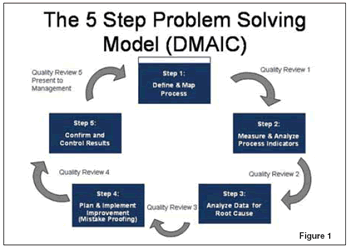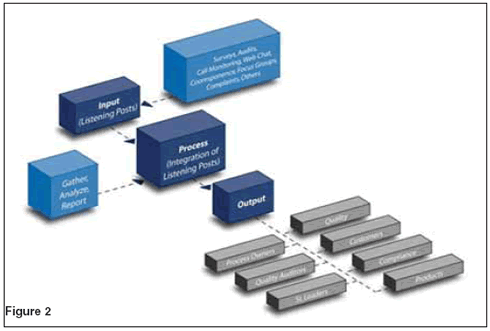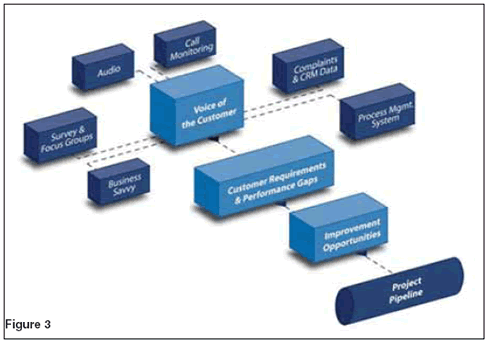Six Sigma Awareness ' Let's Rejuvenate
By Roger Lee, etalk
Every year many people make resolutions to change themselves in some way they perceive would be for the better. For example, I’ve resolved to reduce the amount of coffee I drink from a full pot to a single cup per day because I believe drinking a lot of coffee is probably bad for me. Likewise, we’ve all heard friends, relatives or others talk about wanting to quit smoking, or wanting to go on a diet or go back to school — all with the common denominator of intent to improve some situation or aspect of their personal lives. In spite of the best intentions and fervent plans to change habits, change is difficult for most of us to manage. When it comes to executing change, it often takes much more effort and motivation than we anticipated, and the pain of working at change becomes a major hurdle — often at the expense of the desired goal. But when we stick to our plan and execute the change, we often embrace the results of our labor and with exuberant pride: “I did it!”
Most people tend not to think about plans for change in terms of managing a process, but those plans will get derailed when they don’t take a process approach. For instance, they often relate problems to the people involved, or they tend to look at isolated events and not at the “big picture” or context of those events. They often fail to recognize how all steps of a process work together, or they neglect to review the processes before and after.
Six Sigma is a disciplined, problem-solving methodology that uses statistical analysis in conjunction with the skill sets to understand the big picture and to break down that big picture into smaller chunks. Sigma is a performance indicator that describes the capability of a product, service, process and/or input of consistently meeting current and future defined requirements or expectations. It would be helpful to briefly review the history of Six Sigma and the jargon used before looking at how this methodology has been applied to the service/transactional environment.
The Genesis Of Six Sigma
For those of you who understand the history of total quality management, feel free to skip this section.
This is a timeline of the people and events that played critical roles in the evolution of Six Sigma:
- Frederick W. Taylor in the 1890s and early 1900s;
- Taylor’s systematic study of the use of time and motion by workers prefigured Walter Shewhart’s application of statistical methods to the control of manufacturing quality in the 1920s;
- World War II;
- The application of mathematics to problems of production and quality control helped decrease failure rate and customer standards;
- Business managers and executives became interested in continuing quality control programs after the war;
- W.E. Deming and Joseph Juran took quality control to Japan in 1953, and the 1960s saw a surge in the growth of quality in Japan; and
- In the 1980s, the NBC White Paper “If Japan Can…Why Can’t We?” spurred an increased interest in quality and total quality management.
Six Sigma actually began at Motorola in the mid-1980s. Motorola discovered that products with high first-pass yield (the amount of product that made it through defect free) seldom failed in use. They focused on creating strategies to reduce defects in all of their products. By adopting and applying the Malcolm Baldrige criteria, Motorola won this prestigious national quality award in 1988. Motorola joined forces with companies such as IBM, ABB (Asea, Brown, Boveri), Texas Instruments, AlliedSignal and Kodak to found “Six Sigma Research Institute.”
In the late 1990s, GE Capital CEO Jack Welch successfully led the application of Six Sigma techniques to a non-manufacturing environment. The methodology remains popular partly due to the publicity regarding Jack Welch’s commitment to, and success with, achieving Six Sigma capability.
In a nutshell, the reasons companies benefit from implementing Six Sigma include the following:
- Improvements can be tracked;
- Decisions are made based on tangible data, not merely “gut feelings;”
- Cross-functional team involvement;
- The focus is on process; and
- It creates an avenue for customer concerns to be heard and acted upon.
 The Six Sigma Methodology – Five-Step Problem Solving Model The Six Sigma Methodology – Five-Step Problem Solving Model
One of the more common models used in process improvement is the DMAIC model (see Figure 1). The DMAIC model stands for “define, measure, analyze, improve and control.” Within every step, there is a variety of tools used to ensure you are working toward the best improvement recommendation(s). Generally, after the completion of each step, the information is reviewed with the sponsor of the project.
Application Of Six Sigma In A Service/Transactional Environment
Six Sigma is not only for manufacturing; service organizations, including financial, telecom and healthcare, have discovered that Six Sigma brings a process focus to their operations (e.g., improved customer service processes, improved customer-problem resolution, and improved internal support processes). Within these organizations, call centers play a significant role in gathering, aggregating and analyzing voice-of-the-customer data that are crucial to customer-centric organizations. Understanding voice-of-the-business and voice-of-the-shareholder data is important for organizations, as well, because they have a fiduciary responsibility to their shareholders. Below are examples of where to apply Six Sigma within a contact center environment:
Customer complaints. Provides a means to understand why customers are complaining, and identifies internal processes that are causing customer dissatisfaction;
Employee dissatisfaction. Customer service representatives will often express frustration that they cannot do their job because someone else doesn’t do theirs;
Help desk. Determines why so many calls are being placed with the internal help desk, and identifies types of calls;
Human resources. Defines the new hire process by looking at such factors as the length of time it takes to hire a new employee;
Technology. Compels review of systems and processes that are in place and how efficient they are in helping CSRs perform their jobs consistently; and
Call monitoring. Are the data collected from this forum used to help improve call center processes?

Voice Of The Customer And Voice Of The Business
Call monitoring is one of many listening posts used to gather voice of the customer and voice of the business (see Figure 1). Collecting the appropriate data through the agent evaluation process will help identify strengths and opportunities for improvement. Having an effective quality monitoring process in place is equally as important. The information collected must be analyzed and reported to various levels of management. The appropriate scorecards and metrics must be in place to effectively drive actions and accountability throughout the organization. Below are examples of metrics used within a contact center:
- Quality objectives;
- Call quality (evaluation score);
- First call resolution;
- Errors and rework (accuracy — data entry);
- Efficiency objectives;
- Adherence to schedule;
- Cost performance;
- Cost per call;
- Strategic impact;
- Customer satisfaction scores;
- Customer feedback;
- Employee satisfaction;
- Turnover;
- Percent quality monitored;
- Percent call back;
- Percent sales conversion;
- Average interviews per hire; and
- Percent first call resolution.

Once an organization has defined and collected the appropriate data, this business intelligence can be used to identify process improvement projects that will ultimately be used to develop a project pipeline (see Figure 3). These projects are prioritized, and resources are allocated.
It is important to mention that Six Sigma is a tool to help measure the improvements we make to business processes. Everyone in the company is responsible for quality, not just the quality department. The old adage, “Rome was not built in a day,” applies to implementing Six Sigma within your organization. It takes time, patience and fortitude to see the results of your labor. Equally important is the element of change. Communicating change is a part of implementing Six Sigma. Remember: People need time to “un-change” their behaviors before changing to the new ways.
As director of consulting services for etalk Corporation (www.etalk.com), Roger Lee oversees services that assist etalk customers in maximizing their contact center investments by optimizing their solutions and services to meet their needs. He has more than 15 years’ combined experience in finance, call center operations, information management systems, restaurant operations, payroll services and quality.
[
Return To The February 2005 Table Of Contents ]
|